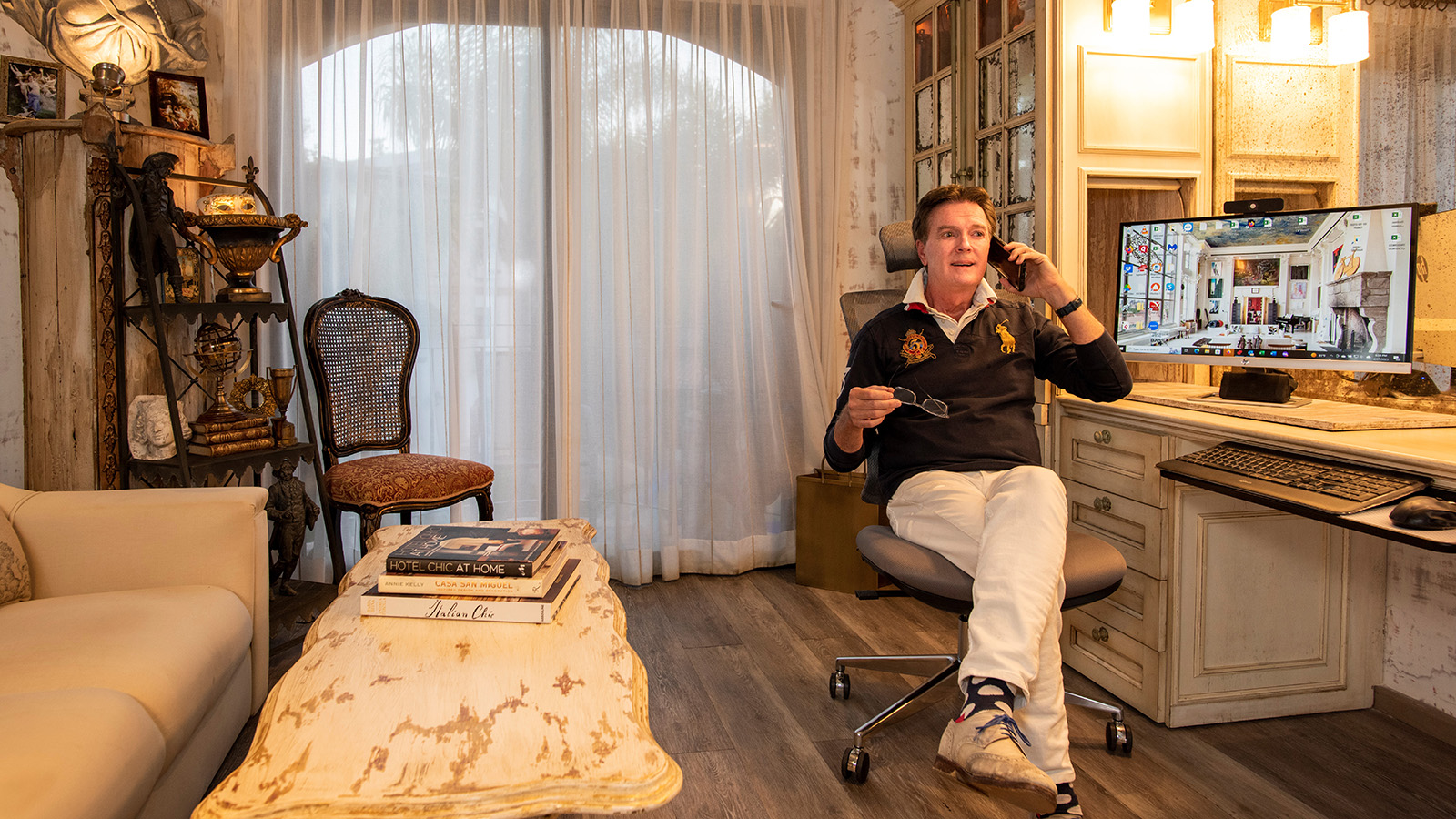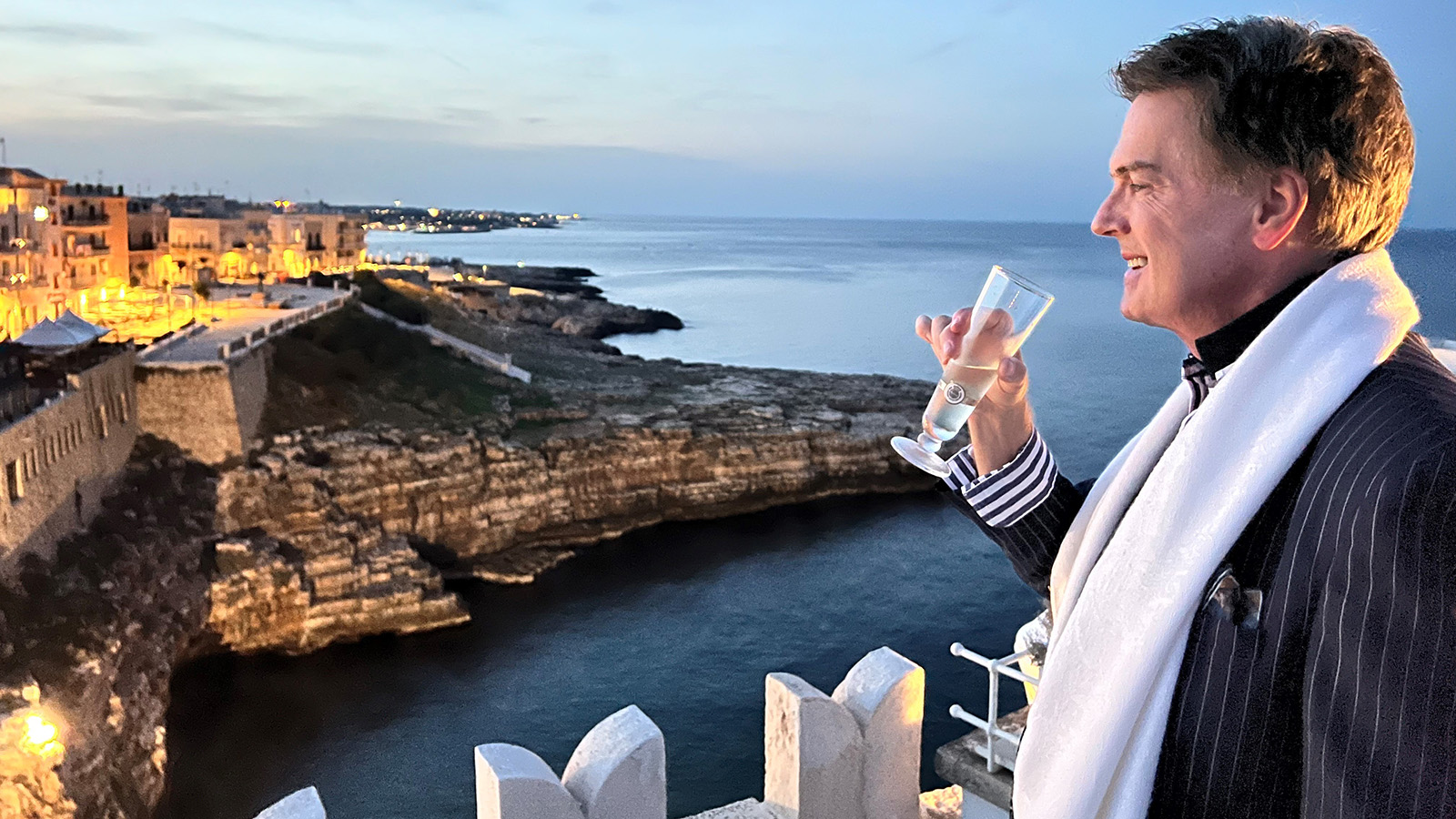Discovering the Allure of San Miguel de Allende with Greg Gunter
Greg’s San Miguel love affair started in 2001 while on the hunt for a semi-retirement location where he could live year-round. Greg’s San Miguel love affair started in 2001 while on the hunt for a semi-retirement location where he could live year-round. After ruling out the coastal cities, and briefly considering the town of Ajijic on the shores of Lake Chapala, he found that San Miguel de Allende possessed the perfect mix of temperate climate, fascinating history, and striking architecture to live and work in.
But there is plenty to learn about Greg before he set foot in—or even knew about—this charming colonial metropolis.
His working life started earlier than most—at the age of 8—selling the local newspaper. “It was a little newspaper called Grit, a bit like the Saturday Evening Post, except I had to sell it every week,” Greg recalled. “It wasn’t a subscription; it was something I had to go round and re-sell.
“This was a door-to-door sales pitch in North Dakota and Wyoming—places where you’re trudging around where it’s 30 degrees below zero and knocking on doors after school hours and having to put your best smile on… so my sales career really did get started at a very early age.” His first tax-paying job came later at age 11.
It wasn’t just sales experience that Greg got a taste of early on in life. At 15, he teamed up with his father, a carpenter, to build homes for clients. Greg explained, “We would build a spec home, and then use that as a model to bring in other buyers and say, ‘hey, we can do at home like this, or adapted with your suggested finishes.’ So, we would presell a contract and then we would build that home for those clients.
“I literally started building homes from the ground up, doing everything except electrical work and plumbing. I did everything else with my own hands with my dad, starting at the age of 15. You learn pretty good customer service skills when you promise a product to a client and then you have to fulfil on that.
“In 1974, it was about a nine-month process to go through building a home from the ground up—you're constantly interacting with those clients for many months and making sure that they're happy, because you don't get paid at the end if they're not!”

San Miguel’s magnetism
While San Miguel de Allende’s various appealing attributes are becoming much more well-known globally these days, Greg moved to the city in a time when it was truly an area practically unknown to tourists and expats alike.
“I made the decision to move here before it earned all these accolades,” he explained. “I bought a lot to build my first home here in 2006. We didn't get the UNESCO World Heritage designation until 2008, and since then, we've been named the number one city in the world nine times by Condé Nast Traveler and Travel and Leisure.”
“It’s a 480-year-old city that has been organically gentrified,” he continued, adding that there are similarly aged cities around the world that have undergone less natural transformations, and have ended up “looking a bit like Disneyland.”
“Here, you'll see a wall that's crumbling and falling apart right next to the brand new $20 million hotel, which is right next to a half-a-million-dollar home, which is then next to a $3 million home. There’s nothing artificial about it—it’s very natural and normal.
“It’s an environment where teachers can still live in the town where they work—I often joke that San Miguel is going through the “Aspen-ization” process which really is quite true, but unlike Aspen, the likes of teachers and firefighters can still live in the same city. They can still afford to do that here.”
It’s not all about architectural beauty and affordability, though.
“We've got the biggest English language social and cultural infrastructure of anywhere in Mexico,” Greg explained. “We're a little town of 150,000 people, but we have the music venues, opera, theater—all of those in the English language.
“And there are over 500 restaurants—so we have the offerings of a city of about three quarters of a million, even though we're a small village—you can walk across the entire length of the city center in about 25 minutes.”
Navigating international differences
As someone who works with a lot of US retirees and second-home owners, Greg is very aware of the variations between the U.S. and Mexican real estate markets—and ensures that his clients feel as comfortable as possible about investing outside of their home country.
Greg explained that there is no MLS in most of Mexico, or any other overarching service for finding available properties. “It's a very different market where customer service is much more important,” he said. “Clients rely on you to be their information source as none of those normal information sources exist to give them viable feedback on values, time on the market, good neighborhoods, etc. The technology is less advanced than in the U.S., and I need to make up for that by offering our clients a much more informative and educational website than is found in the U.S.”
But while potentially viewed as a negative aspect to working in Mexican real estate, Greg relishes the differences. “The ability to shine in the customer service department is what allows people like me to become a big fish in a relatively small pond here,” he explained. “If you bring the North American set of standards, expectations, and customer service to Mexico, which is more laid back and lax, you very quickly excel, especially if you work with American clients like I do.
“That's what buyers expect—it’s what they're accustomed to in the United States. And when they come down here, they go, ‘oh, I've contacted three other realtors who've never called me back—I decided to reach out to you, and you answered in two hours, so I'm working with you!’”

Learning the ropes
While joining the workforce at a young age may not have been his number one choice at that stage of his life, it’s clear that not only does Greg not regret the cold afternoons spent selling newspapers, or the intense days on the building site, but he also fully understands how important they were to shaping his career—and his skillset.
“My dad had taken a drafting course in school and encouraged me to do the same thing in high school,” he recalled. “So I was working toward that eventual architectural career anyway. That was already my mindset—even at the age of 15 I was thinking, ‘I want to be an architect.’ So building homes kind of made sense. But in all honesty, when your dad says, ‘you're going to come build homes with me,’ you go, ‘Yes, sir!’”
Greg also attributes his background and upbringing to his ability to converse with people from all walks of life. “I've got clients that are in the $200,000 range and clients in the $7 million range—and I’ve been broke twice in my life and I’ve been a multi-millionaire. So I can shift from one demographic to the other in my ability to relate to them. I have that ability to connect with people, really. And since I've been in sales since I was 8, I had to learn at a very early age about how to connect with people and how to relate to them.
“I don't even get into talking about real estate and budgets when I meet clients for the first time—I spend the first 10 minutes trying to make a connection—as do all realtors. You know, that's what makes us successful: being able to relate to our clients on a human level.”
Utilizing architectural expertise
Of course, Greg’s background in architecture has also provided a massive boost to his real estate capabilities, allowing him to advise on structural issues and bounce ideas off clients.
“Homes here are very different in the way they're constructed, the way they're engineered, the way they're designed,” he explained. “Even the cultural aspect: Mexican culture is that the kitchen is very much separated from the dining room and living room.
“So, in many cases, I'll be walking a client through a home, and they will say, ‘we like to have people sitting at the bar while we're slicing and dicing veggies, making dinner, and we want a very open kitchen. Is there a way we can open up this kitchen?’ And I'm the only broker, or realtor, in the entire city that's also an architect. I have the ability to get creative with my clients and overcome their obstacles as we're walking through the house. And my clients think that's very helpful.”
With that architectural background, Greg’s self-designed $2,600,000 home was named Home of the Year by Colorado Homes & Lifestyles magazine in 2006.

San Miguel luxury market still booming
Just like most of the world, San Miguel de Allende experienced a buoyant housing market in 2021 and early 2022. But what’s less ubiquitous is that the city is still enjoying a strong luxury market, Greg says.
“Our luxury market has really almost tripled in volume,” he said. “In 2018, which was our last really good year pre-COVID, we would only sell about one $1,000,000+ home a month. In 2021 and 2022, we were selling about triple that rate—about three a month.
“And that's remained, even though our less luxury level in the last four months of 2022 started to slow down in conjunction with the United States. But as those in the high-end demographic market are usually all cash, they care less about the state of interest rates, etc.”
As proof, Greg pointed out that in one week in February 2023, the local market closed on three homes above the $2,000,000 mark.
“I think COVID was really a long-term benefit for us,” Greg continued. “You guys did gangbusters in the United States even during COVID, but here during the peak of COVID, we got decimated because nobody wanted to get on a plane and come down. So 2020 was a hard year for us—but what it did was it made everybody sit up and take notice and go, ‘wow, life’s too short and life is fragile. I really need to not wait until I'm 80 years old to think about a retirement home or a second home in a beautiful warm destination.’”
Fully utilizing the brand’s global connectivity
At Berkshire Hathaway HomeServices, we like to tout our agents’ ability to network and share listings among the 50,000+ worldwide network members. And Greg is the perfect embodiment of this fact. He explained: “In Mexico, all the other franchises are completely disconnected from their American counterpart because they’re simply a master franchise, entirely removed from their U.S. namesake. Before joining Berkshire Hathaway HomeServices I was at a competing franchise, but my frustration with them was that I could never market my listings to my fellow franchise brethren in the United States because we were completely unconnected—we were simply a master franchise.
“So, especially in the high-end market, I leverage the publicity and the ability to market to the rest of the Berkshire Hathaway HomeServices network. That ability to market directly to the rest of the network is critically important.”
In fact, with Greg’s latest listing to hit the headlines, the Ricardo Legoretta-designed home on the market for a local record-breaking $6,995,000, the sellers were specifically looking for a company who had that global connectivity. “The sellers felt that for their unusual home they really needed someone that could provide that international outreach from a marketing and public relations perspective. And that's why they hired me,” Greg said.
On the importance of being part of the Berkshire Hathaway HomeServices brand, he added, “The Halo Effect [the combined impact of the Berkshire Hathaway brand, Warren Buffet, and Berkshire Hathaway HomeServices] is very important. About 99% of my business personally is with Americans and, of course, they know the Berkshire Hathaway brand, so that's an immediate name recognition that really helps outside of the U.S.—and it's a name that is respected.”
Greg Gunter, MBA, is also a Guild member of the Institute for Luxury Home Marketing, a Certified International Property Specialist, a 2021 RISMedia Real Estate Newsmaker, and was Mexico’s only Realtor member of the now-defunct Forbes Real Estate Council. To find out more, click here.













